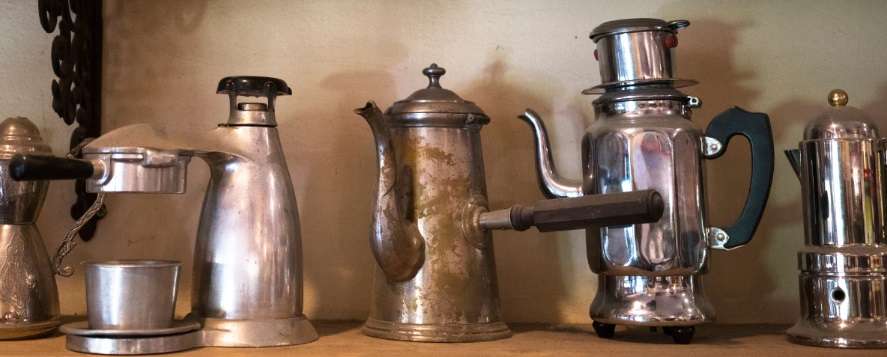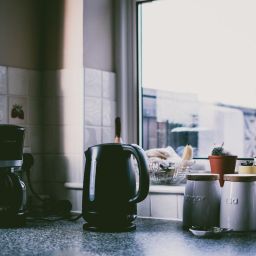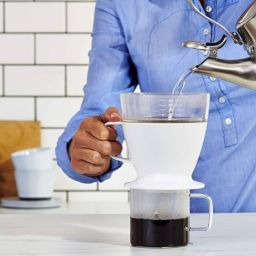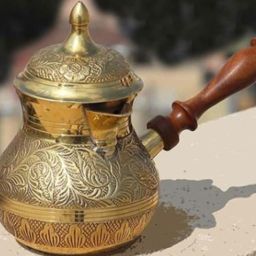
Vintage coffee percolators are like a bridge to the past, offering a nostalgic brewing experience that many coffee enthusiasts cherish. These classic devices, once a staple in every kitchen, are making a comeback. But with their resurgence comes a critical question: Are vintage coffee percolators safe to use? Let’s dive into this query, exploring both the charm and concerns associated with these old-school coffee makers.
Key Takeaways
- Safety First: While vintage percolators can brew a delightful cup of coffee that resonates with history, it’s vital to inspect them thoroughly before use. Look out for signs of wear or corrosion, and if you’re uncertain about the material’s safety, getting a professional opinion could be a wise choice.
- Cleanliness is Key: Regular cleaning isn’t just about maintaining flavor; it’s essential for safety too. Ensuring your vintage percolator is free from old coffee residues and potential bacteria is crucial for a safe coffee experience.
- Modern Alternatives: If the safety of a vintage percolator is in doubt, remember there are numerous modern coffee makers out there. They might not have the same vintage charm, but they offer peace of mind when it comes to safety and convenience.
- Know Your Brewer: Understanding how your vintage percolator works, and what materials it’s made from, can help you assess its safety and brew coffee that tastes just right. Whether it’s stovetop or electric, each percolator has its own quirks and features.
Understanding Vintage Coffee Percolators
Vintage coffee percolators hold a special place in the world of coffee brewing, representing a bygone era when the morning brew was a ritual not to be rushed. These devices, with their distinctive design and brewing method, have witnessed a resurgence among coffee aficionados who crave a touch of nostalgia along with their caffeine fix.
So, how do these age-old contraptions work? Unlike modern drip coffee makers, which rely on gravity to pass water through coffee grounds, percolators recirculate boiling water through the grounds repeatedly. This process, known as percolation, imbues the brew with a robust flavor that many find unparalleled.
While today’s coffee makers often boast digital controls and programmable features, vintage percolators keep it simple. They require a more hands-on approach, allowing users to connect with the brewing process in a way that modern machines often don’t permit. It’s this blend of interaction and tradition that has sparked their comeback in kitchens around the globe.
Safety Concerns with Vintage Coffee Percolators
When it comes to vintage coffee percolators, there’s a charm that modern machines can’t replicate. However, this charm comes with a caveat: safety. The materials used in older percolators, especially those manufactured decades ago, can degrade over time. This degradation isn’t just a cosmetic issue; it can pose health risks, particularly if the percolator’s interior has begun to rust or if its soldering contains lead.
Lead, a harmful toxin, was more commonly used in household items in the past. Therefore, if you’re eyeing a vintage percolator, it’s crucial to inspect it for signs of lead or other harmful materials. Even if the percolator looks pristine on the outside, the brewing process involves high temperatures and repeated water contact, which can cause harmful substances to leach into your coffee.
Maintenance and Care for Safety
Maintaining and caring for your vintage coffee percolator isn’t just about keeping it looking shiny; it’s crucial for ensuring your coffee is safe to drink. Start by giving your percolator a thorough cleaning. Disassemble the parts and wash them with warm, soapy water. Avoid harsh chemicals or abrasive materials that could damage the percolator’s surface or leave harmful residues.
Regularly check for any signs of wear or corrosion, especially in areas where water and coffee come into contact. If you spot any damaged parts, consider replacing them. However, finding replacement parts for vintage models can be challenging, so treat the percolator with care to avoid damaging it further.
Sanitization is another key aspect. Every few uses, run a cycle with a mixture of water and vinegar to descale the percolator and remove any lingering coffee oils or residues. Rinse thoroughly afterward to ensure no vinegar taste remains.
Pros and Cons of Using Vintage Coffee Percolators
When it comes to brewing coffee, vintage percolators have their unique charm compared to modern machines. They are known for producing a strong, rich coffee flavor that many coffee lovers cherish. The process of percolation allows for a full extraction of coffee flavors, giving you a robust cup every time.
However, vintage percolators come with their set of challenges. They lack the convenience features of modern coffee makers, such as programmable settings and automatic shut-off. Also, the percolation method can lead to over-extraction if not monitored closely, potentially resulting in a bitter brew.
In terms of maintenance, vintage percolators require more attention than their modern counterparts. They need regular cleaning and occasional part replacement to keep them functioning safely and effectively.
FAQs
How can I tell if a vintage coffee percolator is safe to use? Inspect the percolator for any signs of corrosion, wear, or the presence of harmful substances like lead. If in doubt, seek a professional’s assessment.
What are the best practices for cleaning a vintage coffee percolator? Disassemble and clean all parts with warm, soapy water. For deep cleaning, use a mixture of water and vinegar to descale and remove coffee residues. Avoid harsh abrasives that could damage the percolator.
Where can I find replacement parts for my vintage coffee percolator? Replacement parts may be challenging to find due to the age of these devices. Check online marketplaces, antique stores, or specialty retailers that focus on vintage kitchenware. Sometimes, manufacturers or enthusiast communities can offer leads on where to find parts.
Final Thoughts
Vintage coffee percolators offer a nostalgic and rich brewing experience, but their safety and maintenance require careful attention. Ensuring your percolator is clean and free from harmful substances is key to enjoying its timeless charm safely. With proper care, these classic brewers can continue to be a treasured part of your coffee ritual.








